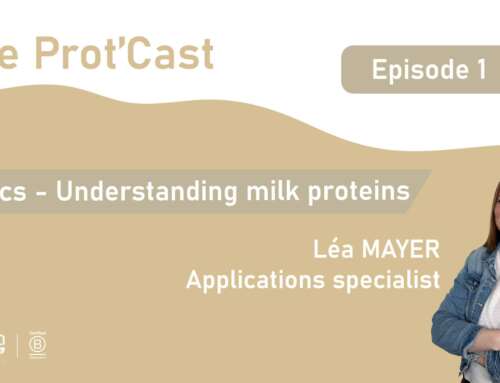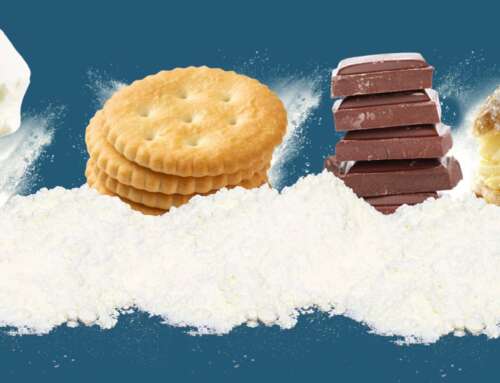Yoghurt is becoming increasingly popular amongst consumers who are concerned about their overall health and well-being. The global yoghurt market is currently expanding at a rapid rate and is forecast to continue this growth in the coming years. Yoghurt sales are on the rise in Europe, Africa, North America, and throughout the Asia Pacific region.
Ideal as a snack, as part of a meal, or as a drink, yoghurt is an incredibly versatile product. But is it all good news for yoghurt producers? In this article, we look at the latest trends in the yoghurt industry and provide details on the current size and projected growth of the worldwide yoghurt market.
Current Yoghurt Consumption Trends in 2023
In terms of dairy products, yoghurt is performing well in the current market. Consumers can choose from a wide variety of yoghurt products and types of yoghurt including ready-to-drink yoghurt, flavoured frozen yoghurt, traditional Greek yoghurt, and many more varieties. Consumer demand for yoghurt is being driven by increasing awareness of the health benefits of yoghurt, but producers would be well advised to keep their eye on developing trends, such as the rise in demand for non-dairy yoghurt.
Plant-Based Non-Dairy Yoghurt
A recent analysis of the yoghurt industry has shown that plant-based vegan yoghurt desserts are becoming increasingly popular among younger consumers. One study showed that 64 per cent of Spanish yoghurt consumers had chosen to replace dairy yoghurt products with non-dairy, plant-based yoghurt. Reports from other markets, such as North America, reveal similar figures. Many producers of traditional dairy-based yoghurt products are now diversifying into developing vegan-friendly, non-dairy options.
Lactose-Free Yoghurt
It has been estimated by healthcare professionals that up to 75 per cent of the world’s population may have some form of lactose intolerance. The increased awareness of lactose intolerance is reflected in consumer choices, with many people now opting for reduced lactose or lactose-free products. This trend creates an opportunity for yoghurt makers as they can market their products as being low-lactose or lactose-free while still providing the health benefits of other dairy products.
Yoghurt with Added Nutritional Benefits
Consumers across the globe are looking for products with additional health benefits. Often referred to as functional yoghurt, yoghurt that includes added probiotics, vitamins and minerals is a key growth area in the industry. Sales of products such as kefir, low-fat Greek yoghurt, skyr, frozen yoghurt, and probiotic yoghurt drinks are expected to grow.
Growing Online Sales of Yoghurt
Online sales of food items and grocery products experienced a massive surge during the height of the Covid-19 coronavirus pandemic. The trend for online shopping grew as many consumers found that they preferred the convenience and simplicity of ordering goods online. People with busy lifestyles are choosing to order shelf-stable yoghurt products online rather than shop in person at health food stores or supermarkets. To stay competitive, yoghurt producers must ensure that they have a strong online presence and efficient, easy-to-use e-commerce options for consumers.
Ready-to-Drink Yoghurt
Ready-to-drink protein products are a huge new trend as health-conscious consumers look for convenient and fast ways to help them boost their energy levels before or after exercise. The drinkable yoghurt and probiotic drink market is one of the fastest-growing markets in the worldwide dairy industry. Sales of ready-to-drink yoghurt products are rising throughout North America and Europe. Ready-to-drink yoghurt is also becoming increasingly popular throughout the Asia Pacific region. A survey of Chinese consumers revealed that 45 per cent of respondents preferred yoghurt that they could consume by drinking rather than spoonable yoghurt.
Spoonable Yoghurt in More Flavours with Less Sugar
There is still, however, a sizeable market for spoonable yoghurt. Parents view yoghurt as being a healthy and nutritional snack or dessert food for their children. Singles and couples also enjoy spoonable yoghurt for its convenience and health benefits. 25 per cent of UK respondents to a diary industry survey said that they regularly ate spoonable flavoured yoghurt to boost their mood.
To satisfy consumer demand for more variety, producers are offering an increasingly wide array of premium flavours that combine traditional flavourings such as vanilla with exotic fruit flavours like cardamom or hibiscus. Many producers are concentrating on developing sugar-free or low-sugar products that will satisfy consumer demand for more yoghurt flavours and also meet the demand for healthier products.
Which Country Consumes the Most Yoghurt?
On a per capita basis, Turkey is by far the world’s biggest consumer of yoghurt. Figures show that on average Turkish people consume 27 kilograms of yoghurt each per year. Yoghurt is also widely consumed in France, Greece, Bulgaria, Armenia, Lebanon, Ireland, Germany, Brazil, Indonesia, and Australia.
Yoghurt consumption is also increasing throughout the Asia Pacific region with strong markets emerging in China, Japan, Africa, and Thailand. Probiotic yoghurt drinks make up 22 out of every 100 bottled beverages consumed by Chinese people. Japan also is a large consumer of yoghurt.
How Big is the Global Market for Yoghurt?
According to an industry report, the countries with the biggest markets for yoghurt in 2022 were:
- Saudi Arabia
- Togo
- Uruguay
- Indonesia
- Syria
- Cyprus
- Israel
The yoghurt markets in the Asia Pacific region, South America, Africa, North America, mainland Europe and the UK also all showed strong growth within the last year.
On a global scale, the worldwide production of yoghurt is expected to reach 329,000 metric tons by 2026. This is a major increase when compared to the 278,000 tons that were produced in 2021. The amount of yoghurt produced worldwide has risen by 3 per cent per year since 1966. European yoghurt consumption is projected to reach 13 billion kilograms by the year 2026.
To date, revenue generated by the worldwide yoghurt market is valued at USD $167.50 billion and is projected to have a compound annual growth rate (CAGR) of 6.99 per cent until the year 2028. At the time of writing, the most revenue generated by yoghurt sales was from China, which recorded yoghurt sales of USD $41,120 million.
The global market for plant-based yoghurt was valued at USD $1,618.777 million in 2021. It is forecast to grow at a CAGR of 22.81 per cent to reach a value of USD $6,819.861 million by 2028.
The worldwide lactose-free yoghurt market was valued at USD $11.45 billion in 2021 and is expected to reach USD $24.36 billion by 2031 at a CAGR of 8 per cent.
The global market for yoghurt drinks was valued at USD $52.3 billion in 2022 and is projected to reach a value of USD $90.3 billion by 2030 with an expected CAGR of 7.1 per cent. The North American yoghurt drink market was valued at USD $14.3 billion in 2022. The Chinese market for yoghurt drinks is expected to attain a CAGR of 11 per cent and reach a value of USD $20.3 billion by 2030.
Is the Yoghurt Industry Still Competitive?
The yoghurt industry is certainly growing at a rapid rate throughout the globe, especially for non-dairy, lactose-free, and probiotic yoghurt drink products. Greek yoghurt and flavoured spoonable yoghurt products are also sure to experience good growth in the coming years. To maintain competitiveness, producers must meet consumer demands for healthy products that have non-dairy alternatives, can be ordered easily online, and are available in a wide variety of flavours.
High added-value proteins such as Promilk® or Prodiet® could help improve recipes.
Sources
https://store.mintel.com/report/the-future-of-yogurt-and-desserts-market-report
https://www.vantagemarketresearch.com/industry-report/plant-based-yogurt-market-1598
https://examine.com/conditions/lactose-intolerance/
https://www.glanbianutritionals.com/en/nutri-knowledge-center/insights/yogurt-trends-watch
https://edairynews.com/en/countries-consume-yogurt/
https://procoolmfg.com/drinkable-yogurt-market-china/
https://www.statista.com/outlook/cmo/food/dairy-products-eggs/yogurt/worldwide
https://www.alliedmarketresearch.com/lactose-free-dairy-market-A18453


